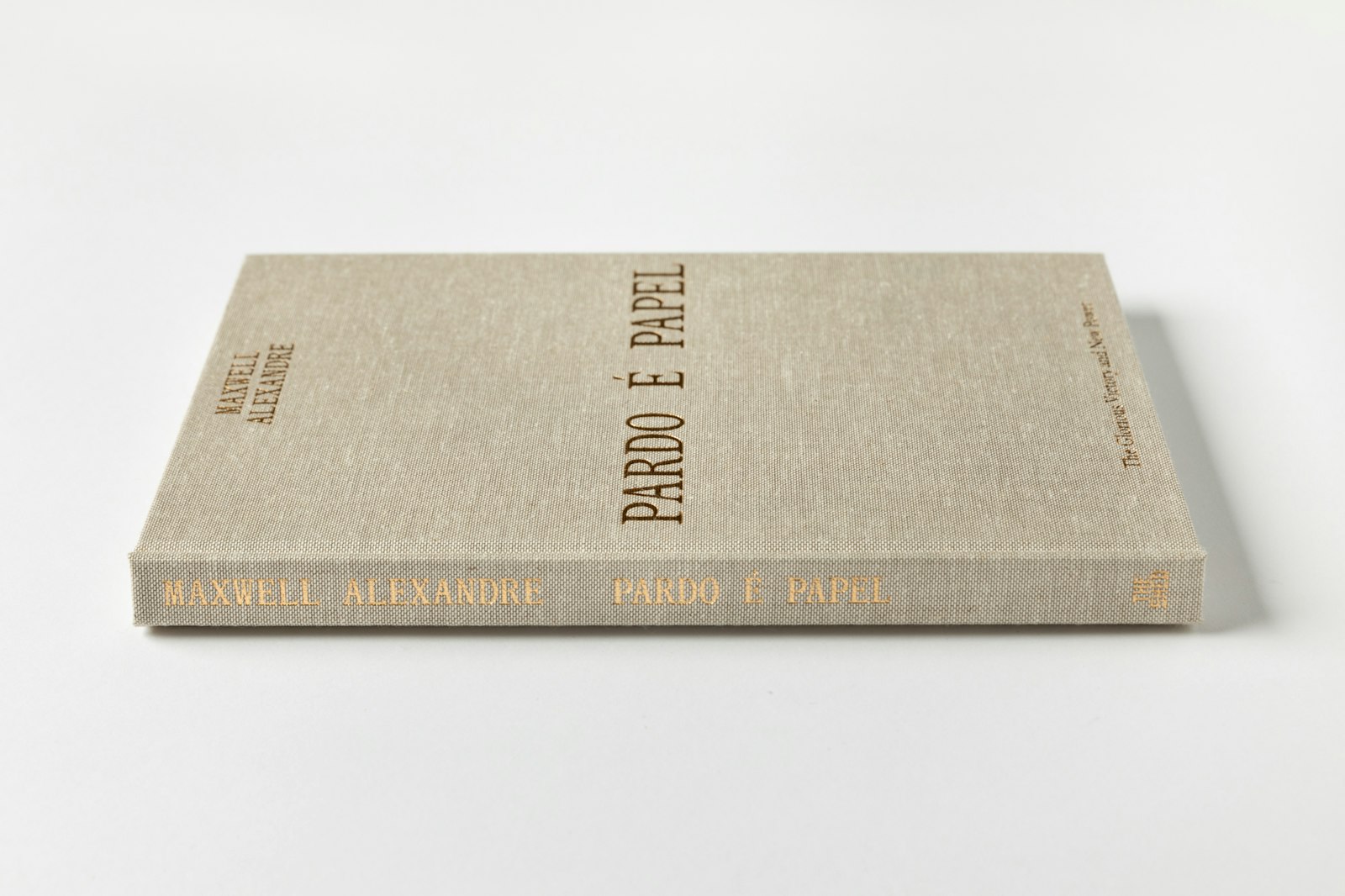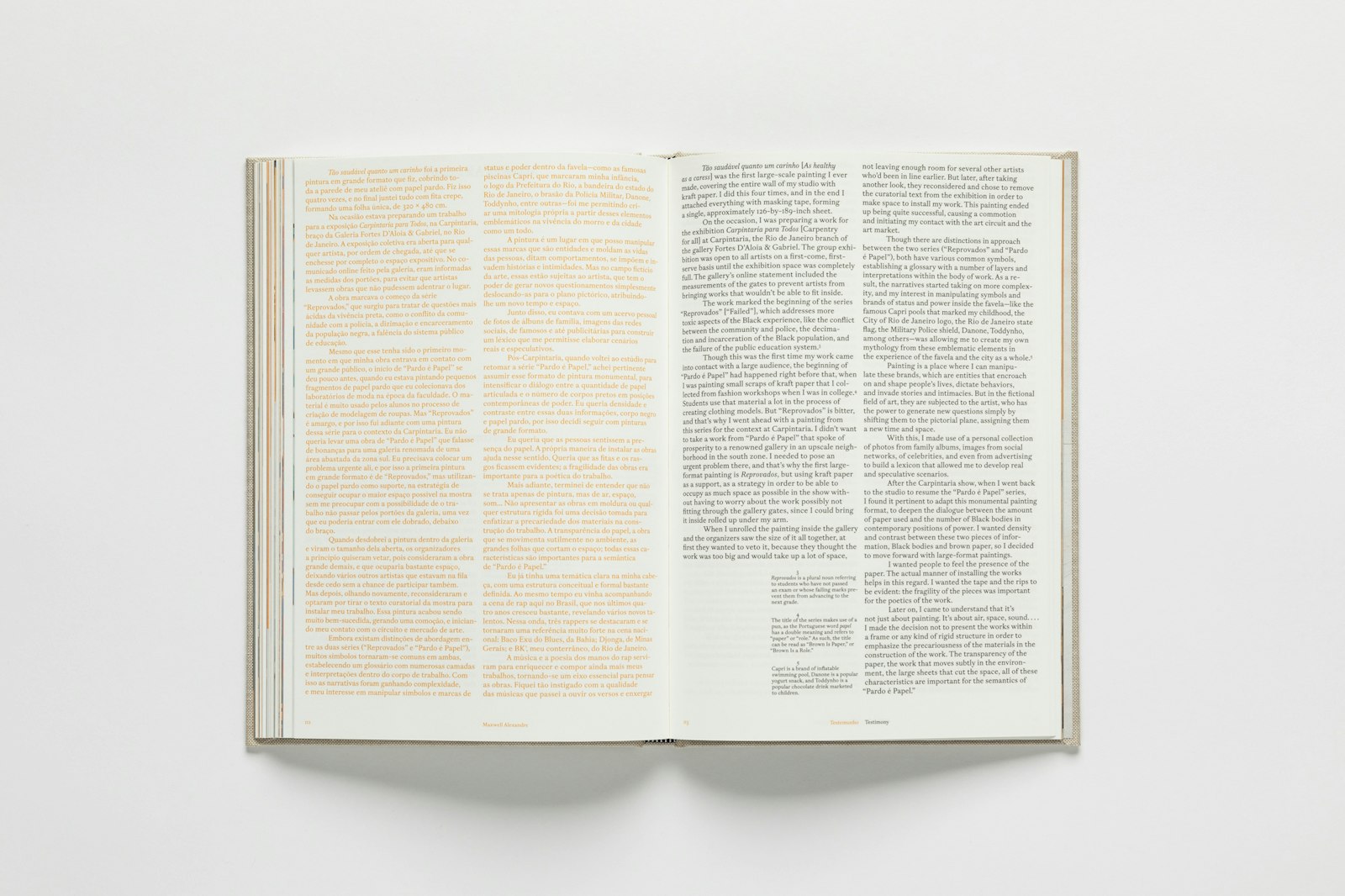In his first North American solo exhibition, Brazilian artist Maxwell Alexandre presents new and existing paintings from his ongoing series “Pardo é Papel” (2017–) that depict collective portraits celebrating the empowerment, self-esteem, and prosperity of Black people. Suspended from the gallery ceiling, Alexandre’s large-scale paintings form pathways and intimate enclosures that surround visitors. They portray striking scenes of communal leisure interspersed with recurring religious and art historical imagery. Pop cultural symbols appear alongside these images, including depictions of Black cultural icons, like Beyoncé, Nina Simone, and Elza Soares, and commercial products from his childhood, such as popular plastic blue Capri pools, Danone yogurt, and the chocolate drink Toddynho.
Since the first period of “Pardo é Papel,” “The Glorious Victory” (2017–), to the most recent subseries, “New Power” (2019–), Alexandre has painted Black people on brown kraft paper, commonly referred to in his native Portuguese as pardo. Though the main series title translates directly to “brown is paper” to reference the pardo paper itself, historically the term holds double significance as an ambiguous racial category in the Brazilian census. Activists argue that the category, based on the physical appearance of skin tones rather than ancestry, was designed to obscure Black identity within the Brazilian population by reducing the percentage of citizens who identified as Black.
Instead, Alexandre uses pardo paper to affirm Black identity, representation, and empowerment. Many of the paintings in “The Glorious Victory” are tributes to Black musicians from Brazil and beyond. Alexandre draws his work closer to the influence of hip hop and Brazilian rap by referring to his series as albums, much as his musical collaborators, the rappers BK’, Djonga, and Baco Exu do Blues, refer to collections of their songs. The paintings commissioned for this exhibition from his “New Power” subseries center Black audiences contemplating art in museums and galleries to draw attention to the exclusionary dynamics at play in white, Western contemporary art spaces.
This fully illustrated catalogue features essays by exhibition curator Alessandra Gómez and scholar Tina M. Campt, as well as an interview with the artist by Hans Ulrich Obrist and a newly expanded reflection by Maxwell Alexandre on his work. Designed by Normal. Co-published by The Shed and Verlag der Buchhandlung Walther und Franz König.
Hardcover thread-sewn book, 148 pages, 19 by 27.5 centimeters.
- Art Director, Designer
- Renata Graw
- Designer
- Lucas Reif
- Editor
- Alessandra Gómez
- Editorial Director (The Shed)
- Phillip Griffith
- Design Director (The Shed)
- Keri Bronk
- Designer (The Shed)
- Dorothy Lin
- Collaborator
- Paul Zdon
- Contributor
- Maxwell Alexandre
- Contributor
- Tina M. Campt
- Contributor
- Hans Ulrich Obrist
- Printer
- die Keure
- Documentation
- Evan Jenkins











